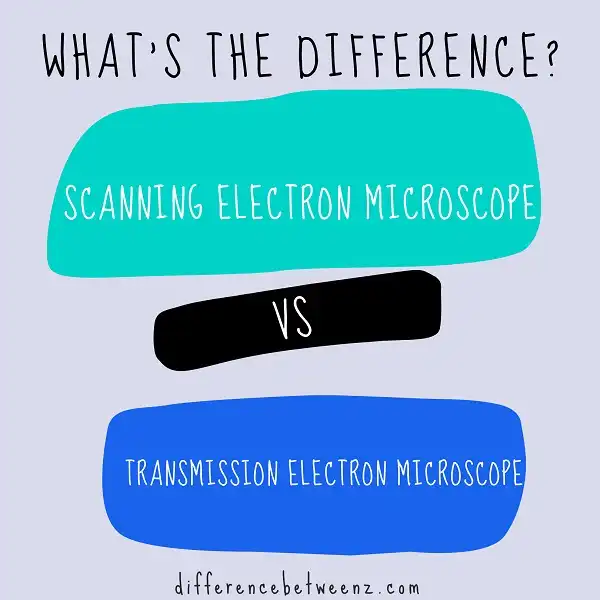Scanning electron microscopes and transmission electron microscopes are both types of electron microscopes that are used to view objects on a very small scale. However, there are some key differences between the two types of microscopes. In this blog post, we will explore those differences and help you decide which type of microscope is best suited for your needs. So let’s get started!
What is Scanning Electron Microscope?
A scanning electron microscope (SEM) is a type of electron microscope that produces images of a sample by scanning the surface with a focused beam of electrons. The electrons interact with the atoms in the sample, producing various signals that contain information about the surface topography and composition of the sample. The image is then displayed on a monitor, typically in false color or shades of gray. SEMs are capable of achieving high resolutions, which makes them useful for examining the microstructure of materials. In addition, SEMs can be used to analyze the composition of a sample by elemental mapping, and they can also be used for imaging non-conductive materials by coating the sample with a thin layer of conducting material.
What is Transmission Electron Microscope?
Transmission electron microscopes (TEMs) are powerful tools that allow scientists to view objects at the atomic scale. TEMs work by bombarding a sample with a beam of electrons. The electrons then interact with the atoms in the sample, producing an image that can be magnified and analyzed. TEMs are capable of resolving features as small as 0.2 nanometers, making them ideal for studying viruses, cells, and other tiny objects. In recent years, TEMs have also been used to create 3D images of nanostructures, providing insights into their electronic properties. With their extraordinary capabilities, transmission electron microscopes continue to play a vital role in advancing our understanding of the world at the smallest scale.
Difference between Scanning Electron Microscope and Transmission Electron Microscope
The two main types of electron microscopes are scanning electron microscopes (SEM) and transmission electron microscopes (TEM). Both instruments use a beam of electrons to create an image of the specimen, but there are important differences in how the images are formed. In an SEM, the electron beam is scanned across the surface of the specimen, and secondary electrons are used to create the image. In contrast, a TEM uses a thin beam of electrons that passes through the specimen. The resulting image is formed by the interaction of the electrons with the atoms in the specimen. TEMs provide higher resolution images than SEMs, but they can only be used on thin specimens. As a result, each type of microscope has its own advantages and disadvantages, and choosing the right instrument depends on the nature of the sample being studied.
Conclusion
The scanning electron microscope and the transmission electron microscope are both types of electron microscopes. However, they have different functions. The scanning electron microscope is used to create three-dimensional images of a specimen, while the transmission electron microscope is used to study the internal structure of a specimen. If you are looking for an instrument that can give you high-resolution images of the surface features of your specimens, then the scanning electron microscope is your best option. If you need to investigate the internal structure of your specimens, then you should choose the transmission electron microscope.


